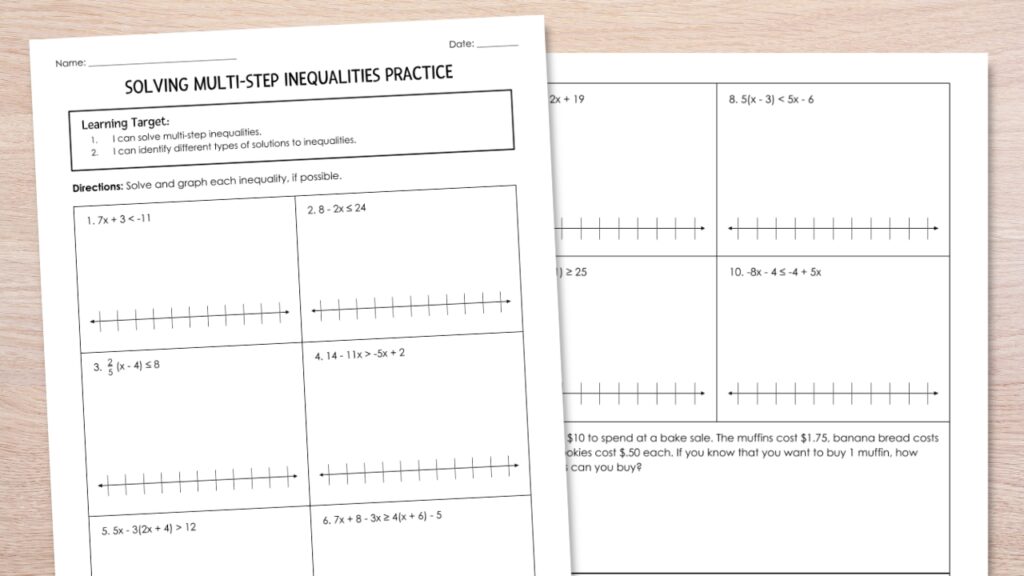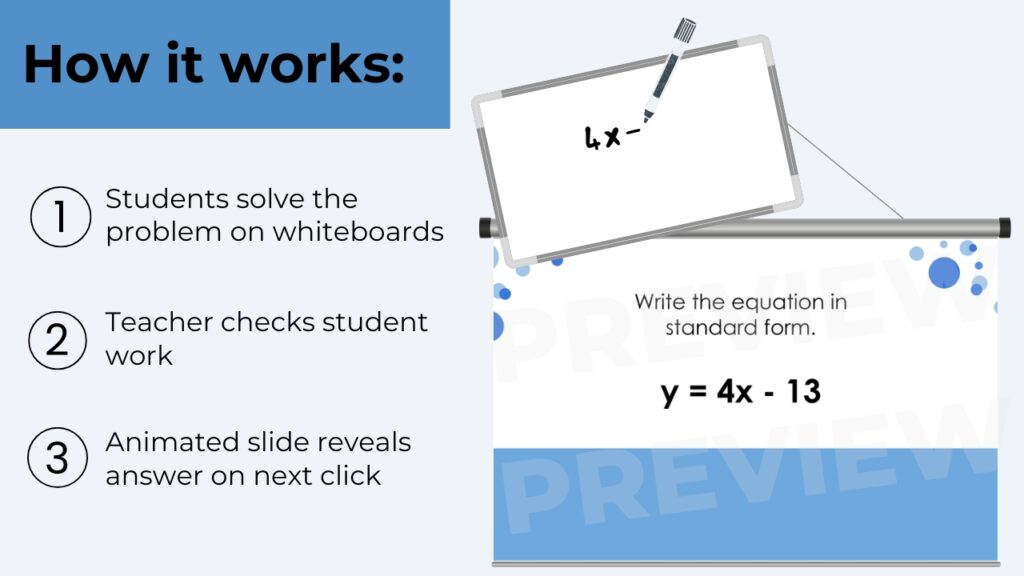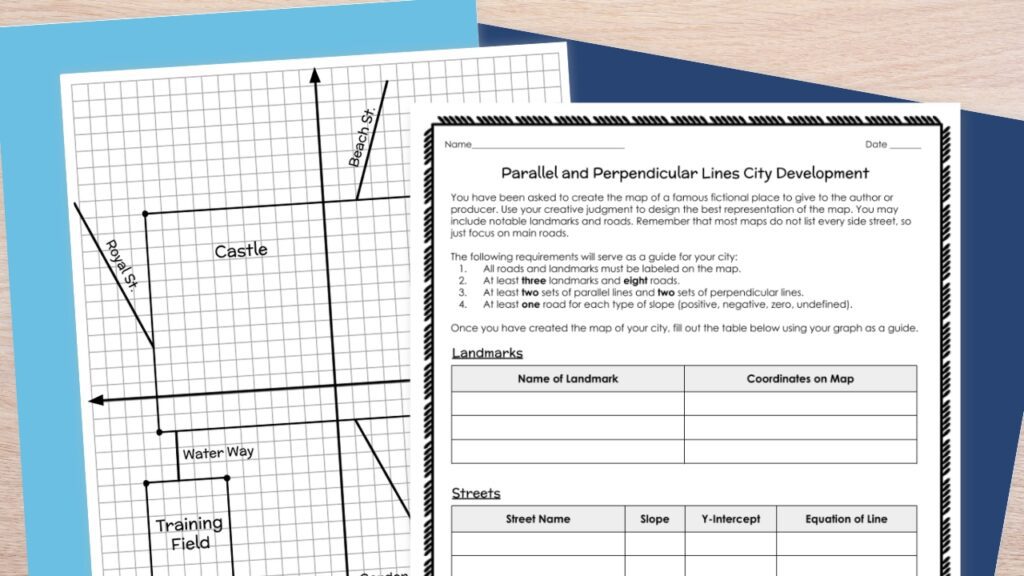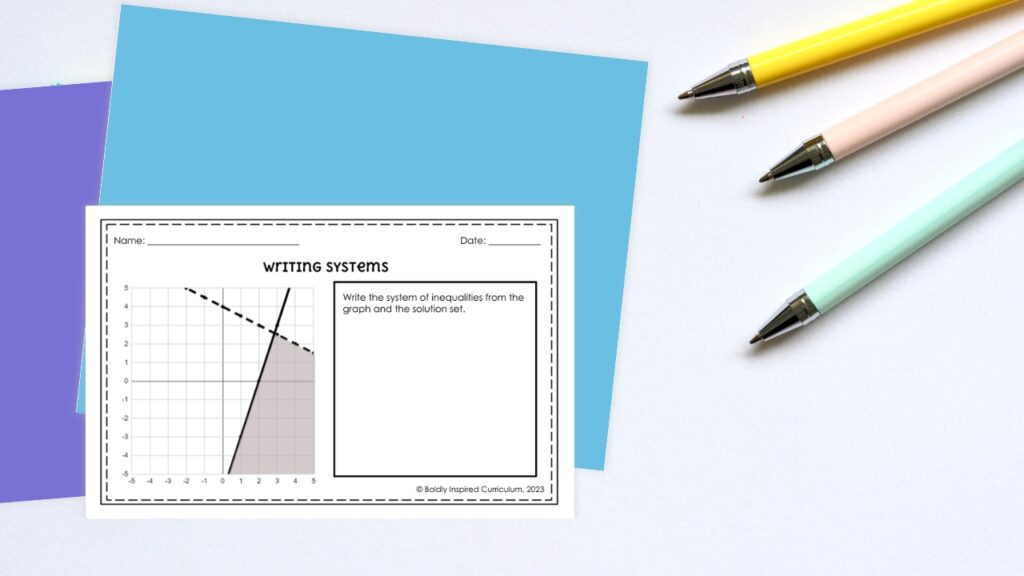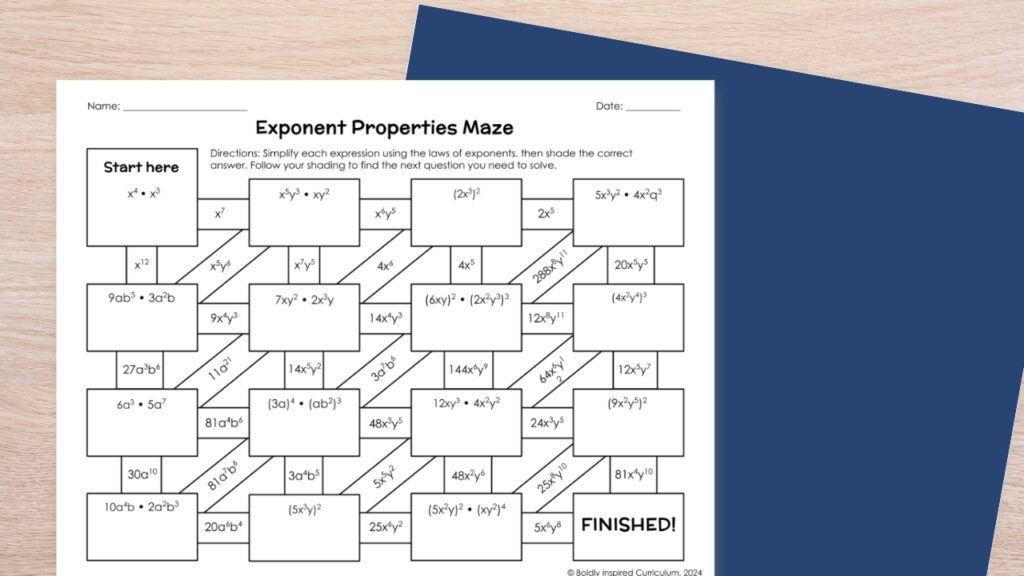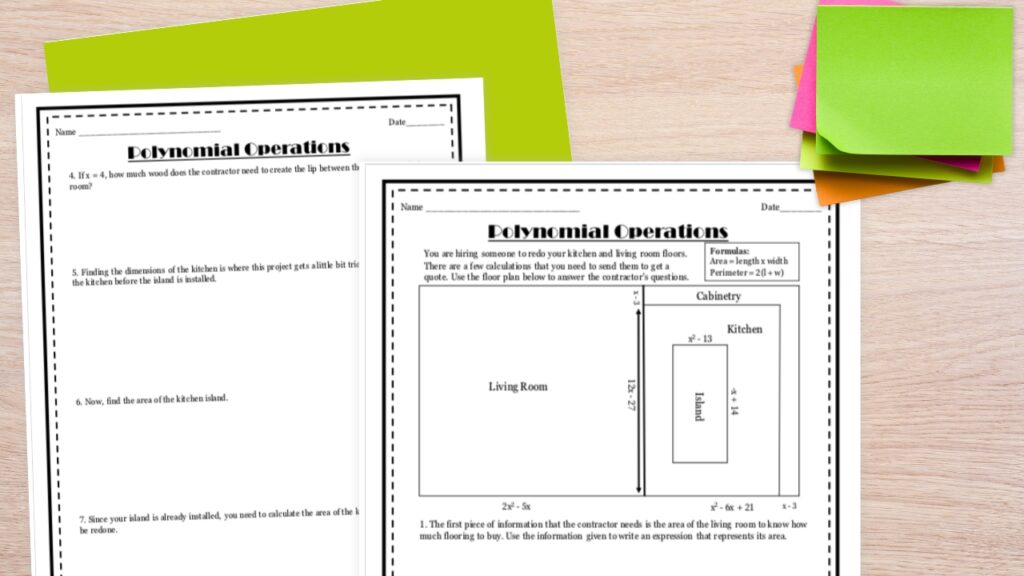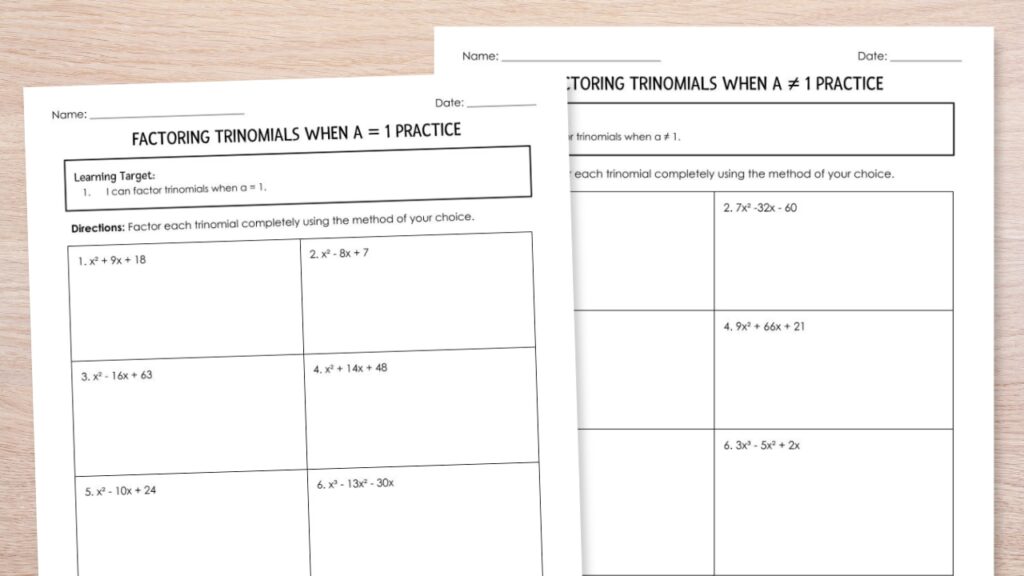If you teach Algebra 2, you already know the first few weeks of school can make or break your students’ confidence. Whether they’re coming off summer break or just barely made it through Algebra 1, students need strong foundational skills to be successful in your classroom.
That’s why summer is the perfect time to review key concepts before diving into new material. Even just a little prep can go a long way toward helping students feel ready and capable on day one.
In this post, I’m sharing 10 essential math skills every incoming Algebra 2 student should review and how to use them for summer school lessons, tutoring, or your back to school Algebra 2 activities.
Table of Contents
ToggleWhy Your Students Need to Review Algebra 1 Skills Over the Summer
Most Algebra 2 content builds directly off what students learned in Algebra 1 and Pre-Algebra. But the summer slide is no joke and if students return with shaky skills, they’ll struggle to keep up with the fast paced Algebra 2 curriculum.
A strong Algebra 1 review helps them hit the ground running and gives you a clear picture of what gaps may still need support.
Need a ready-to-use solution?
Check out this Getting Ready for Algebra 2 Summer Prep Packet. It includes targeted review pages on every topic below—designed to build confidence for the back to school season without overwhelming students.
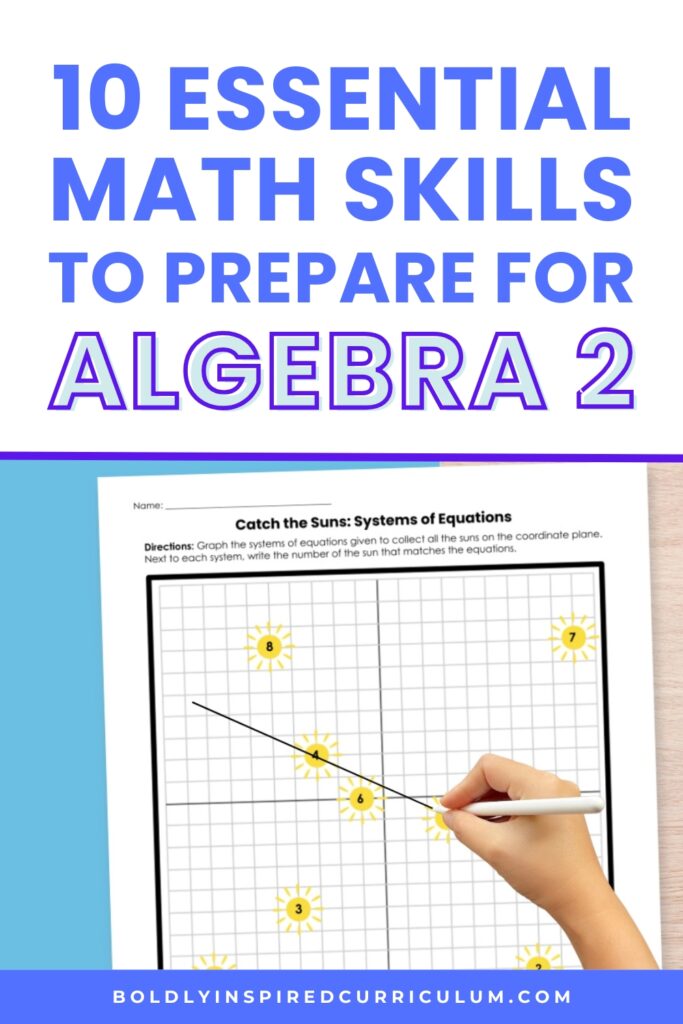
Math Skills Every Incoming Algebra 2 Student Should be Familiar With
1. Multi-Step Equations with Variables on Both Sides
Students need to be able to isolate variables, combine like terms, and solve accurately. This foundational skill sets the tone for success with more complex expressions and equations in Algebra 2.
This no prep, self-checking mystery picture puzzle is perfect for reviewing multi step equations with variables on both sides. When your students solve each problem correctly, pieces of the mystery picture will appear.
2. Solving and Graphing Inequalities
Make sure students can solve inequalities (including those with negative coefficients) and correctly graph solutions on a number line. This foundational skill is essential when graphing systems of linear and nonlinear inequalities.
These guided notes and worksheets review solving and graphing inequalities, types of solutions, and applications of inequalities.
3. Writing and Graphing Linear Equations
Students should understand how to write equations in slope-intercept, point-slope, and standard form from a graph, two points, and a table. Being able to write and rewrite linear equations supports your students’ overall math fluency and helps them solve real world applications of functions.
This Google Slides activity reinforces rewriting equations and isolating variables ⬇️
When students start graphing absolute value and piecewise functions, graphing lines should feel like second nature. I love assigning this parallel and perpendicular lines activity because it is completely open ended and gets all of my students engaged. It is the perfect activity for summer school or Algebra 1 review.
4. Solving Systems of Equations
When students get to Algebra 2, they learn how to graph systems of equations with nonlinear functions and solve three equation systems. If their understanding of solving two linear equation systems is not solid, they will struggle to keep up in this Algebra 2 unit.
This summer prep packet exclusive activity reviews solving linear systems by graphing.
5. Systems of Inequalities
Once students have mastered linear inequalities and systems of inequalities in Algebra 1, they are introduced to feasible regions and linear programming. Instead of having to reteach systems of inequalities before starting optimization word problems and applications, your students will be able to start on the Algebra 2 curriculum right when they come back to school.
6. Exponent Properties
Students should review how to simplify expressions using the product, quotient, and power rules. Mistakes here lead to confusion with exponential functions and polynomial expressions later on.
This product and power rules maze is a short and sweet review of exponent properties to prepare your students for polynomials.
7. Polynomial Operations
Students entering Algebra 2 must feel confident adding, subtracting, and multiplying polynomials. These skills aren’t just standalone. They’re essential for factoring, solving quadratic equations, and working with higher-degree polynomial functions later in the year.
This real world application relates polynomials to interior design by having students calculate area and perimeter. This activity is perfect for group work and getting your students to think outside of the box.
8. Factoring Trinomials and Solving Quadratic Equations
I always tell my students that if there is one skill I want them to remember from Algebra 1 it is factoring. It is such a large unit in Algebra 1, I am always confident that they will remember it vaguely. However, any year that I teach Algebra 2, my students act like they have no idea what it is.
I usually try to find alternative activities rather than just worksheets. Sometimes with an important skill like factoring, students just need to practice and worksheets are the simplest way to do that.
9. Radicals Operations
Radicals are often rushed at the end of Algebra 1, which means many students enter Algebra 2 unsure of how to simplify square roots or combine like terms involving radicals. These weaknesses can lead to major confusion when students encounter rational and irrational numbers, radical equations, or radical functions later in the year.
My students find rationalizing the denominator to be the most complex part of our radical expressions unit. These worksheets will give your students plenty of practice simplifying radicals with fractions, so they are prepared to start simplifying expressions with conjugates.
10. Simple and Compound Probability
Though it’s often taught at the end of 7th or 8th grade, probability is a key skill that carries over into Algebra 2, especially in units involving data analysis, statistics, and functions involving probabilities.
Your students should be able to differentiate between simple and compound probability as well as solve real world problems using the probability formulas. These digital task cards are a great way to review all types of probability in one self-checking activity!
Tips for Engaging Students During Summer School
The key to engaging students during summer school is structure and variety. Students are more likely to engage when:
- Activities are self-paced but supported
- The content feels familiar, not overwhelming
- They’re working with partners or small groups
- There’s a clear sense of accomplishment
The Getting Ready for Algebra 2 Summer Prep Packet was designed with all of that in mind. Whether you’re teaching summer school, tutoring, or planning your first week of Algebra 2 lessons, your plans are ready to go.
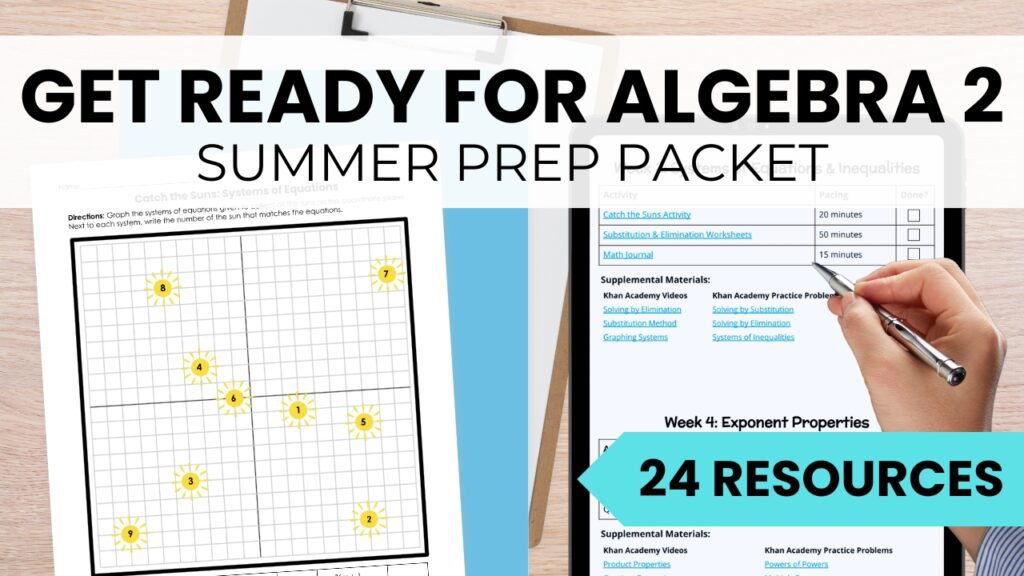
Final Thoughts about These Algebra 1 Skills and Review Activities
The first week of Algebra 2 sets the tone for the whole year. If your students come in confident with the skills above, they’ll be in a much better position to handle new material.
Use this list to plan Algebra 2 back to school review lessons, reinforce critical Algebra 1 skills, and give your students a head start.
And don’t forget to grab the Algebra 2 Summer Prep Packet! It’s low-prep, student-friendly, and packed with practice to build momentum right away.

